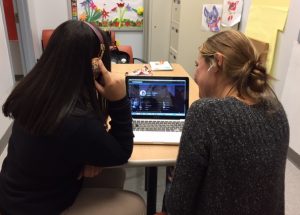Lyric revision, also referred to as lyric substitution, is a form of song writing that involves creating and rewriting lyrics to existing songs. This musical activity provides a wonderful forum for the adolescent to create a song that more accurately represents them personally. It also creates an opportunity for the adolescent and therapist/counselor to work together and co-create a meaningful story. Lyric revision is a also great activity to do in groups with adolescents, group members work together to co-create a song that is representative of who they are as individuals and as a group.
Tips for Lyric Revision Exercises:
- This is a great activity to introduce after having engaged in some music listening and song discussions with the adolescents individually or in groups
- Introduce the activity to the adolescent and ask if there is a song he/she would like to work with, it can be helpful to begin with a song that is very familiar
- It is helpful to provide a copy of the lyrics for reference
- After listening to the original song, guide the lyric re-write with a prompt that is relevant to what the adolescent is struggling with
- For example, if the adolescent is struggling with depression, your directive might be, “Today, let’s work on changing the lyrics to this song to describe how you might cope with feeling sad or down at home and in school.”
- If the adolescent appears stuck, help them brainstorm ideas and work through the creative and expressive process together
- Remember, your role is to be understanding and accepting of the adolescent, and to facilitate successful experiences of creative expression




